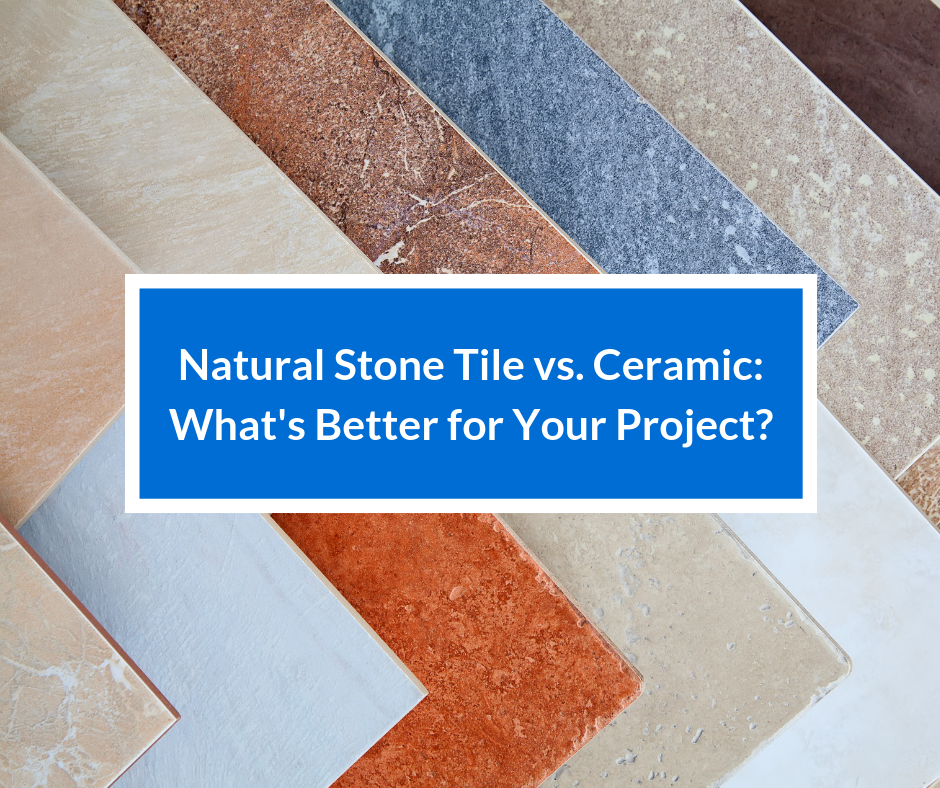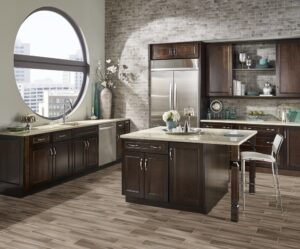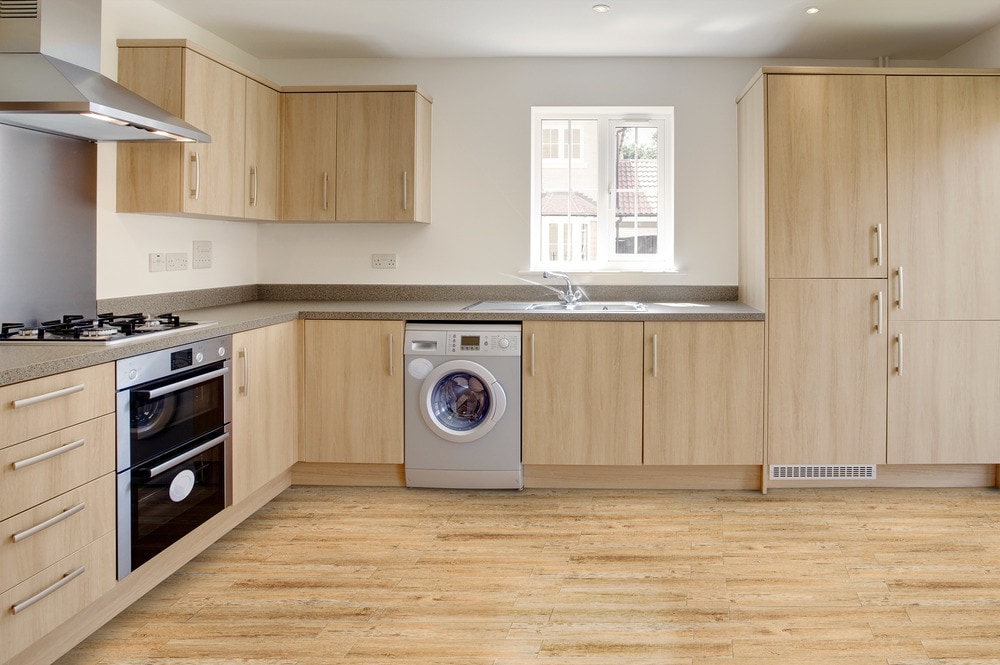Natural Stone Tile vs. Ceramic: What’s Better for Your Project?

The flooring of a room sets the tone for the rest of the space. It needs to be durable, stylish, and ready to take on the daily wear and tear of the space. Two of the most common flooring types are natural stone tile and ceramic tile. With similar overall looks available in both options, it can be hard to decide which one makes the best choice for the space. Understanding the differences between stone tile vs ceramic, and the pros and cons of each flooring material, will lead you to a decision.
Natural Stone Floors

Natural stone floors are queried materials cut into uniform tiles. You can use them on floors, walls, and backsplashes throughout the home. Marble, granite, limestone, travertine, and slate are a few of the most popular natural stone tile options. These materials are synonymous with luxury and opulence and can increase the resale value of a home, especially when featured in kitchens and bathrooms
Because they are completely natural, colors can vary greatly from one piece to the next and these tiles are definitely on the more expensive side of all available flooring options. You can use natural stone both inside and outside the home. It can easily transition from a living room to a sunroom or even a back patio.
Ceramic Tile

Ceramic tile is a man-made clay material that is hardened in a kiln and then finished and glazed to complete the design. These durable tiles are suitable for both wet and dry locations, making them a flooring option that can run from the front door straight through the kitchen, laundry room, and even the bathrooms in the home. Because it is man-made, ceramic tile is available in more consistent color options. It also makes a much more cost-effective choice than natural stone flooring.
Stone Tile vs Ceramic: Which Material is Right for Your Space?
When it comes to deciding which material makes the best choice for your space, it is all about understanding the benefits and drawbacks of each. Before you look at the materials themselves, consider the overall design of the space, how many people use the space, and what the space needs to hold up to on a daily basis.
Maintenance
Once flooring is in place, basic maintenance is necessary to keep it looking like new. Both natural stone and ceramic tile require regular cleaning but they way to do that varies between the two.
- Natural Stone: Stone materials are porous and require a sealant or glaze to help fill the pores and make the material resistant to water and stains. This sealant will need reapplied periodically, depending on what type of natural stone material you choose. When it comes to everyday maintenance, stay away from acidic cleaners with natural stone, as it could damage the stone itself.
- Ceramic Tile: Glazed ceramic tile is ready to use without an additional coating. If you are worried about staining, you may want to add a sealant over the grout to keep it as clean as the surrounding tile. Unglazed ceramic tiles or terra cotta may need a sealant or top coat to protect from staining, much like natural stone would. The durable glaze on ceramic makes it suitable for use with a wide variety of cleaning products.
Durability
The longevity of a flooring is a major factor in deciding which type makes the best investment for your space. Both natural stone and ceramic tile can be long-lasting additions to a space, depending upon what type you get. Both varieties offer some options that are longer-lasting than others.
- Natural Stone: The type of natural stone can dictate the durability of the floor. Granite and slate are much more durable than limestone or marble and tend to wear better over time. As it wears, natural stone tends to chip along the edges and in the corners. Starting with a more rustic tile can help minimize the appearance of imperfections.
- Ceramic Tile: Ceramic tile comes in a variety of different hardness ratings. For ultimate durability, look for tile with a higher PEI rating, ideally a PEI 3 or above. Lower PEI ratings are better for backsplashes and applications that won’t endure foot traffic.
Color Selections
Before selecting a final color or material, consider the overall look of the space. The style of your home may dictate stone tile vs ceramic, and which one will best achieve the desired look for the space.
- Natural Stone: Stone comes in a wide variety of natural color variations, ranging from crisp whites to deep beige and brown tones. The material chosen will help to dictate the color of the flooring.
- Ceramic Tile: Because ceramic tile is man-made, it can come in countless color variations. It can even be made to resemble the look of natural stone or hardwood planks. The versatile color selections of ceramic make it easy to find a tile that coordinates with any interior décor.

Cost
In addition to the cost of the flooring, make sure to factor in the cost of installation supplies and finishes. It is also important to consider whether the flooring will be professionally installed or taken on as a do-it-yourself project. Professional installation or additional tile-cutting tools may also factor in to your total budget for this home renovation project.
- Natural Stone: Because it is a natural resource, stone tiles are among some of the more expensive flooring options. Their luxurious look makes the expense worth it if the budget allows for it.
- Ceramic Tile: Ceramic tile is one of the most affordable and durable flooring options available. The prices do range depending upon the style, finish, and grade of the ceramic tile chosen. Unglazed tiles are less expensive than glazed tiles but require an additional finishing process during the installation process.
With so many different varieties of both natural stone tiles and ceramic tiles available, it is easy to find a style, size, and type of flooring that will elevate the décor of your home for many years to come. Browse our collection to discover your personal favorites. Make sure to take a moment to look at the specifications for detailed installation instructions. Additional underlayment or installation materials may vary based on the flooring chosen and the current subfloor featured in your room.

